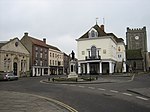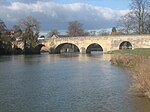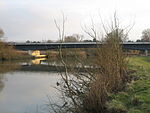Oxford University Women's Lightweight Rowing Club
1980s establishments in EnglandOxford student sports clubsRowing clubs in OxfordshireRowing clubs of the River ThamesRowing clubs of the University of Oxford ... and 2 more
Sports clubs and teams established in 1984Women's rowing in the United Kingdom

The Oxford University Women's Lightweight Rowing Club was established in 1984 to represent the University of Oxford in the race against the Cambridge University Boat Club at the Lightweight Boat Races. Throughout the season, the Club races as Tethys Boat Club.
Excerpt from the Wikipedia article Oxford University Women's Lightweight Rowing Club (License: CC BY-SA 3.0, Authors, Images).Oxford University Women's Lightweight Rowing Club
St Lucian's Lane, South Oxfordshire Winterbrook
Geographical coordinates (GPS) Address Nearby Places Show on map
Geographical coordinates (GPS)
| Latitude | Longitude |
|---|---|
| N 51.595015 ° | E -1.122915 ° |
Address
Oxford University Boat Club
St Lucian's Lane
OX10 9ER South Oxfordshire, Winterbrook
England, United Kingdom
Open on Google Maps








